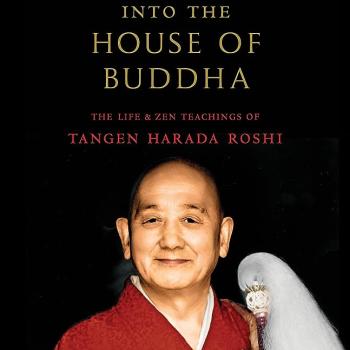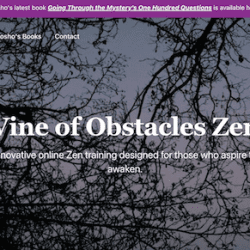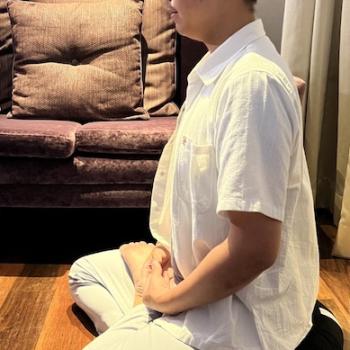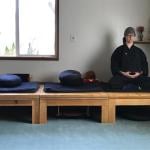In about 1990, I participated in a week-long priest training with Maezumi Roshi at Dogen’s original temple, Koshoji, near Kyoto. Genpo also attended. He and I hit it off and snuck off grounds at least once for a beer, sharing and comparing our experiences training with our teachers. Complaining about them too – although Katagiri Roshi had died recently so I wasn’t too whiney. Anyway, Genpo ain’t no sock monkey (readers of Brad Warner’s blog know what I mean).
To simplify the arguments in the Tricycle letters, Seigaku voices the traditionalist view that doubts Big Mind can lead to the same enlightenment as our Zen ancestors “…who sweated blood for decades before realizing its truths.”
Genpo, the innovator voice, says that students using Big Mind “…have shown more openness and compassion in their daily life as well as less of the rigidness that often occurs in traditional Zen training.”
Sounds better than sweating blood, no?
Big Mind comes from the
Voice Dialogue process of Hal and Sidra Stone. Genpo and others in the White Plum lineage worked with them and have modified- or perhaps gone beyond – Voice Dialogue and applied it to Zen work. The method is quite controversial in Zen circles and my sense is that a majority of teachers (including at least some in the White Plum) are critical.Genpo argues that the Big Mind experience creates the same kind of kensho experiences (
see this video on the Big Mind site, for example) as does years of zazen.Several years ago I attended a weekend workshop in this process (although they didn’t call it Big Mind) at Great Vow Zen Monastery, led by Chozen and Hogen Bays. The hub of the practice as I understood it is that each of us
are different voices – the skeptic, the lover, the critic, the spiritual seeker, the witness, etc. When we regard each of these voices as “not me, not mine, not the self,” we are not suckered by them and they can all drop off more easily.I found it to be a helpful way of communicating about nonattachment – and experiencing it. To say, even in our inner dialogue, “I notice a critical voice that says…,” helps provide breathing room between subject and subject.
Further, I was impressed at the workshop at the number of people – at least 1/3 of those participating – who reported what Hogen and Chozen called “Buddha Mind” after just a day or so of practicing this method, including a Zen priest who said she’d been practicing about 10 years and never had this depth of experience, sitting up late into the night with it. This seemed like really rapid settling down, much more so than the usual sesshin experience where after a day of zazen, most people are “very crabby at self and others,” according to my stages (see
Keep Me in Your Heart Awhile).Here’s the “what I think” part. First, I welcome Big Mind on to the Zen scene. A creative redesign of the process of Zen is really important, as important for the traditionalists as for the creatives. It gives both predispositions something to rub up against and wrestle with.
I have two major concerns. First, the method (especially the way Genpo talks about it in the video linked above) views zazen as a means to an end, a way to “…open the lens of the mind and look around,” as he puts it.
Encouraging this orientation to practice, undermines and obscures “…that there is absolutely nothing to be attained,” and puts off practicing as such until some other magical day when the camera lens opens completely.
Second, what Genpo seems to be describing and what people at the workshop I attended seemed to be experiencing were “boon experiences.” Genpo says that in these experiences subject and object are still separate, that Big Mind opens the lens so that the person can look around.
The self is chasing after objects rather than being confirmed by the 10,000 things advancing.Summary: If Big Mind encourages the means-ends drama that we’re using to chew up the earth (and each other), then I’m concerned that this way of making peace will lead to more war. And if the Big Mind process is mislabeling boon experiences as kensho, then I share Seigaku’s point above, “to learn takes effort,” and a short cut may be a detour.











